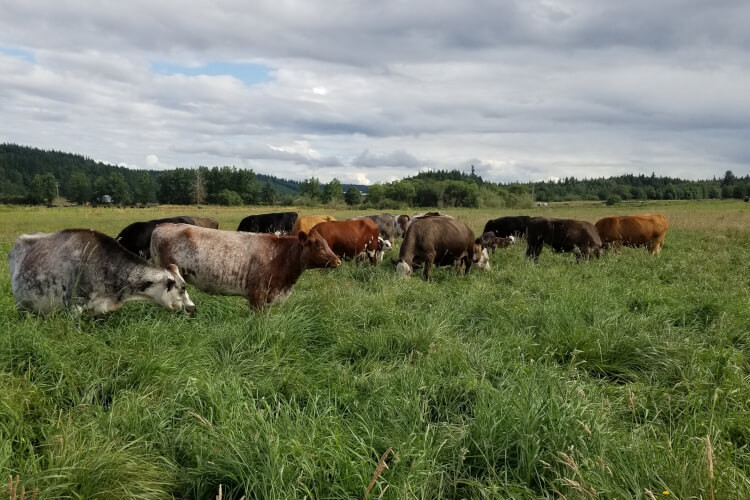The best LOW-MESS way to decorate Easter Eggs!
posted on
March 30, 2021

"Can we please buy white eggs for Easter?!"
Growing up, we always had a small flock of hens to provide our eggs. It seems special to have brown eggs, unless you're a kid at Easter and all the advertisements show pretty pastel dyed eggs in the Easter baskets. You just can't make spring green, sky blue, baby pink, or sunshine yellow out of a brown egg. We used to beg our mother to buy store eggs for Easter.
Now I’m the mom. And a farmer. And we have A LOT of eggs. I am not buying eggs at the store, no matter what. Sorry kids. Instead we have created our own family tradition of coloring Easter eggs that is not only less mess than dye, but also takes advantage of the beautiful rainbow of natural colors from our hens. Of course we do have a few hens that lay white and light blue eggs, and those would make nice pastel colors. And as an adult I appreciate the rich colors you get by dying brown, green, and blue eggs.
But when the first Easter began to approach when Farmhand Eli was old enough to color eggs, other thoughts began to wander through my head. Like, “why do we have to dye eggs when they are already so pretty? I go to a lot of bother to breed an Easter basket into every carton.” And more importantly, “Help! A two year old with cups of dye? Seriously?”
Enter a quick internet search, and one of my all-time favorite mess-saving discoveries. Decorating boiled eggs with color crayons while they’re still hot! No dye to spill on clothes, floor, etc, the inherent pretty colors of the egg are retained, and everyone has fun. It’s really simple. Just boil your eggs, timing it so they’re done when everyone is ready for the decorating session. Leave eggs in the hot water until you’re ready for them. Put hot eggs in egg cups or an egg carton, dump out a pile of crayons, and let everyone scribble away. The heat makes the crayons melt onto the shell beautifully. Supervision is still required as the eggs are hot, of course, but even the youngest children can have fun with some help. And older children (including those only young at heart) can get quite fancy with intricate design work.
Now I'm sure this would be no consolation to my younger self who desperately wanted pastel pink eggs. But with little ones who do not yet have expectations for the “right” way to color eggs, this is magic. Now that Farmhand Vera is adding her many arms to the fun, I am extra glad to not be putting cups of dye on the table…
Someday, I am sure, they will hear about dying eggs and this mom’s peace will be shattered, but until then we’re looking forward to egg decorating time!
Happy Easter!





